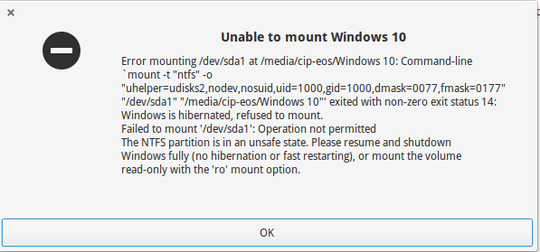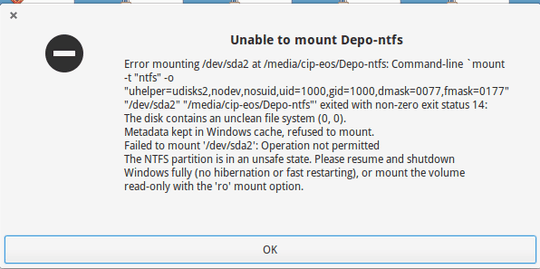A bit late to this thread, but I thought it worth making these observations:-
When Ubuntu Linux (I'm on 16.04LTS) starts, it does not seem to automatically mount non-root partitions. If I try to start Thunderbird, where my TB profile is on a data partition, I'll get an error. The solution is to go into Nautilus, or similar, and click on the data partition, which will mount, provided there are no errors like described in this thread.
I'm on dual-boot too. It used to work switching off the Windows Fast-Start (that is, making sure the Windows was properly Shut Down before booting into Linux). That has stopped working recently and I always get an error as described by the original poster.
Using Chkdsk /f in Windows does not fix the problem. Ubuntu Linux still gives the same error.
I therefore have to start a terminal and run sudo ntfsfix /dev/XY (where XY is the partition e.g sda2 or sdb1) every time I boot to Linux. This fixes the partition and usually throws errors to do with MFT mirrors. No idea why as I've run every diskcheck I can on the partition and it's all fine.
So I would say that NTFSFIX is the answer, but I cannot find why it might be that this problem persists on dual-boot machines, even though Windows is closed down properly. Experience tells me that it will be Windows causing the problem, not Linux, so the only option I'm left with if I want to avoid the NTFSFIX work-around, would be a re-install of Windows 10.


1
Do you need write access? If not, the error message advises that you can mount the partitions as read-only. If you modify any files, save the modified contents in a partition that Windows and Linux can both access; or save in the Linux partition and use ext2sd to access it. You can then copy back the modifications when you reboot Windows.
– AFH – 2015-02-21T20:47:52.730